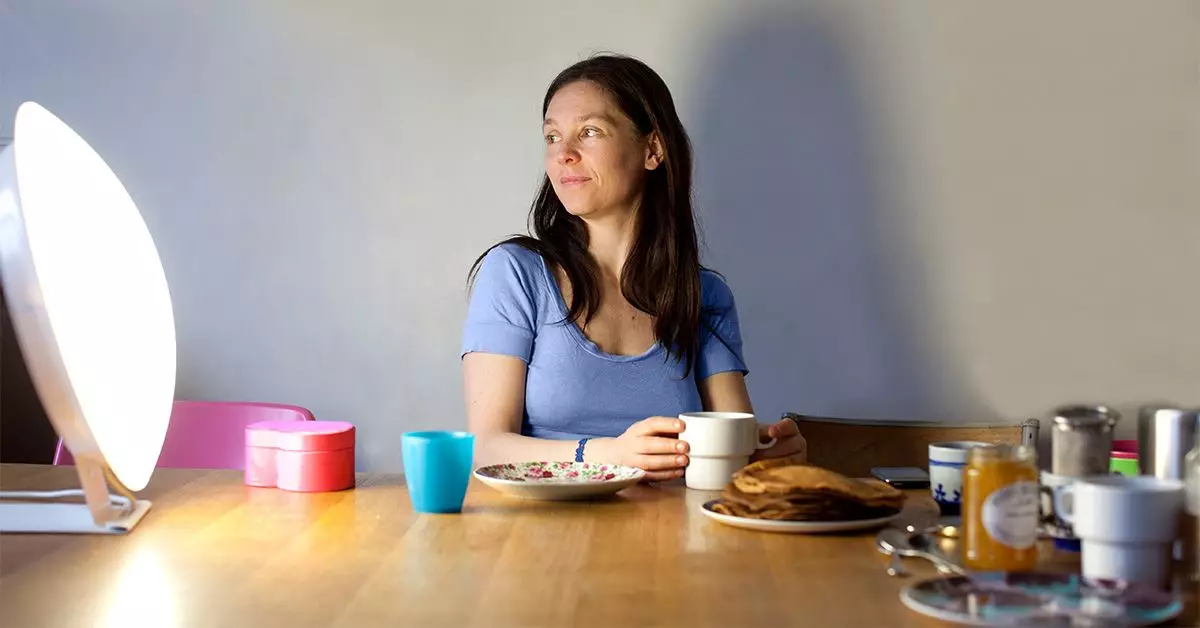As winter casts its long shadow over many regions, an invisible adversary often lurks in the depths of darkness: seasonal depression, also recognized as major depressive disorder with a seasonal pattern. This condition, previously referred to as seasonal affective disorder (SAD), primarily strikes during the winter months when sunlight is scarce. However, its reach extends to other seasons, including summer. For those grappling with this malady, the absence of natural sunlight can lead to feelings of hopelessness, lethargy, and profound sadness. It’s a silent epidemic that many endure, often without adequate acknowledgment or treatment.
The stakes are high; seasonal depression can disrupt sleep, diminish productivity, and compromise overall well-being. It’s imperative for individuals afflicted by this condition to seek treatment options that align with their specific needs. Amidst various approaches to combat these seasonal blues, one method stands out for its accessibility and effectiveness: phototherapy.
Harnessing Light: The Science Behind Phototherapy
Phototherapy, often referred to as light therapy, leverages the power of artificial light to replicate the sun’s rays. This innovative treatment approach involves the use of specially designed light boxes that emit bright light at an intensity of 10,000 lux, mimicking natural sunlight’s effects. The user is typically advised to spend 30 minutes or more in front of the light box each morning, allowing the artificial light to permeate their biological rhythms. The essence of this therapy lies in its ability to regulate the body’s circadian rhythms—essentially synchronizing our internal clocks to enhance mood and energy levels.
Research underscores the efficacy of light therapy in addressing seasonal depression. A notable 2024 review highlights its potential to diminish depressive symptoms by enhancing sleep quality, mitigating stress, and lessening melatonin production—the hormone that typically elevates sleepiness. Moreover, light therapy may stimulate serotonin production, intertwining our physiological responses to light with mood regulation.
The Experience of Light Therapy: How to Get Started
Before embarking on a light therapy regimen, it’s essential to consult with a medical professional, especially for individuals with pre-existing eye conditions or those who are photosensitive. The light box should be placed at eye level, allowing indirect exposure without staring directly at the light. Users can seamlessly incorporate this therapy into their daily routines, engaging in activities like reading or working while basking in its glow.
Most individuals begin their light therapy sessions in the fall, continuing until early spring—an act of self-care that can treat the emerging symptoms of seasonal depression effectively. Individuals may find that adherence to this routine not only uplifts their mood but allows for a more balanced daily life, rekindling joy in mundane activities.
Beyond Seasonal Blues: Wider Applications of Light Therapy
Phototherapy is not solely confined to winter-pattern seasonal depression. A 2019 review affirms its potential as a standalone treatment for other mood disorders, providing a welcome alternative for those who prefer non-pharmacological approaches to mental health care. For individuals averse to medications—whether due to side effects or personal beliefs—light therapy emerges as a promising solution that carries fewer risks.
This versatility means that those experiencing various forms of mood disorders, including anxiety and chronic fatigue syndrome, may also benefit from integrating light therapy into their treatment plans. With minimal side effects reported, except for rare occurrences like eye strain or headaches, light therapy proves to be an attractive and safer option compared to medication.
Navigating the Challenges: Limitations and Considerations
Despite its myriad benefits, light therapy is not universally suitable. Individuals with certain eye conditions or those on medications that heighten light sensitivity must consider potential risks before engaging in this treatment. Side effects can occasionally include discomfort, which may diminish after a few sessions. It’s crucial to monitor one’s response and adjust exposure times accordingly, always under the guidance of a healthcare professional.
Additionally, availability and cost may present barriers to access for some individuals. Light boxes can be pricey and may not always be covered by insurance, which can deter those in need from seeking treatment. While light therapy offers substantial potential for those battling seasonal depression, efforts must be made to increase awareness and accessibility to this effective intervention.
In a society that often overlooks the profound impacts of seasonal mood fluctuations, embracing innovative treatments like light therapy can catalyze a brighter outlook on life during the darkest months. Those who commit to illuminating their days with the support of phototherapy might find themselves not just surviving, but truly thriving despite winter’s chill.

